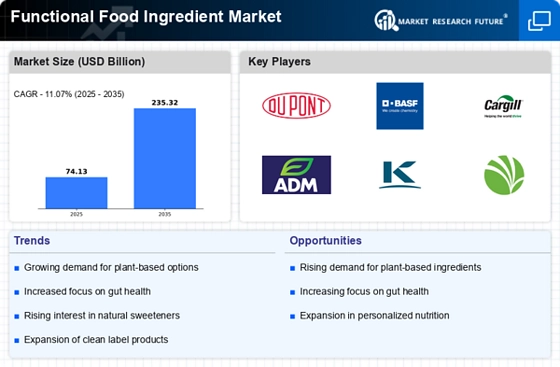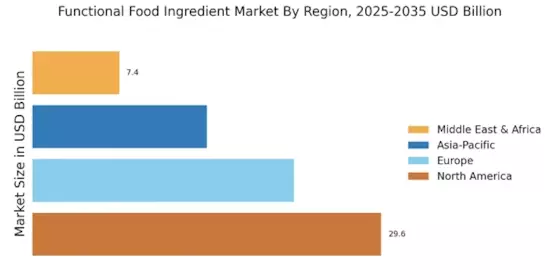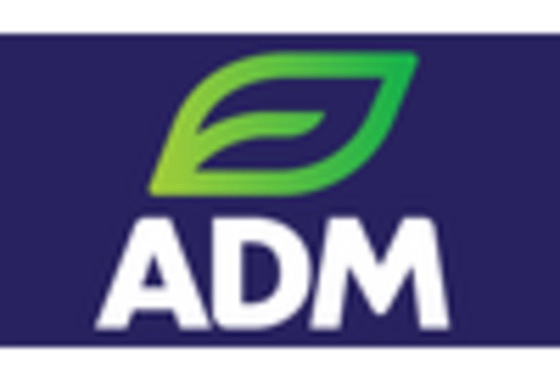The Functional Food Ingredient Market is currently characterized by a dynamic competitive landscape, driven by increasing consumer demand for health-oriented products and the growing awareness of the benefits of functional ingredients. Key players such as DuPont (US), BASF (DE), and Cargill (US) are strategically positioned to leverage innovation and sustainability in their operations. DuPont (US) focuses on enhancing its product portfolio through research and development, particularly in plant-based ingredients, while BASF (DE) emphasizes its commitment to sustainability by investing in eco-friendly production processes. Cargill (US), on the other hand, is actively pursuing partnerships to expand its reach in the market, indicating a trend towards collaborative growth among major players. Collectively, these strategies contribute to a competitive environment that prioritizes innovation and sustainability as key growth drivers.
The market structure appears moderately fragmented, with a mix of large multinational corporations and smaller niche players. Key business tactics such as localizing manufacturing and optimizing supply chains are becoming increasingly prevalent as companies seek to enhance operational efficiency and respond to regional market demands. This competitive structure allows for a diverse range of offerings, catering to various consumer preferences and dietary needs, while also fostering a climate of innovation as companies strive to differentiate themselves in a crowded marketplace.
In August 2025, Kerry Group (IE) announced the launch of a new line of plant-based protein ingredients aimed at the growing vegan and vegetarian market. This strategic move not only aligns with current consumer trends towards plant-based diets but also positions Kerry Group (IE) as a leader in the functional food ingredient sector. By expanding its product offerings, the company is likely to capture a larger market share and enhance its competitive edge.
In September 2025, Ingredion (US) unveiled a new initiative focused on the development of clean label ingredients, responding to the increasing consumer demand for transparency in food labeling. This initiative underscores Ingredion's (US) commitment to innovation and consumer-centric product development. By prioritizing clean label solutions, the company is expected to strengthen its market position and appeal to health-conscious consumers, thereby enhancing its competitive standing in the functional food ingredient market.
In October 2025, Givaudan (CH) announced a strategic partnership with a leading biotechnology firm to develop novel flavoring agents derived from functional ingredients. This collaboration is indicative of Givaudan's (CH) focus on integrating cutting-edge technology into its product development processes. By leveraging biotechnology, the company aims to create unique flavor profiles that not only enhance taste but also provide health benefits, thereby setting itself apart in a competitive landscape.
As of October 2025, the competitive trends within the Functional Food Ingredient Market are increasingly defined by digitalization, sustainability, and the integration of artificial intelligence in product development. Strategic alliances are playing a crucial role in shaping the current landscape, enabling companies to pool resources and expertise to drive innovation. Looking ahead, it appears that competitive differentiation will increasingly pivot from traditional price-based competition to a focus on innovation, technological advancements, and the reliability of supply chains. This shift suggests that companies that prioritize these elements are likely to thrive in an evolving market.


















Leave a Comment